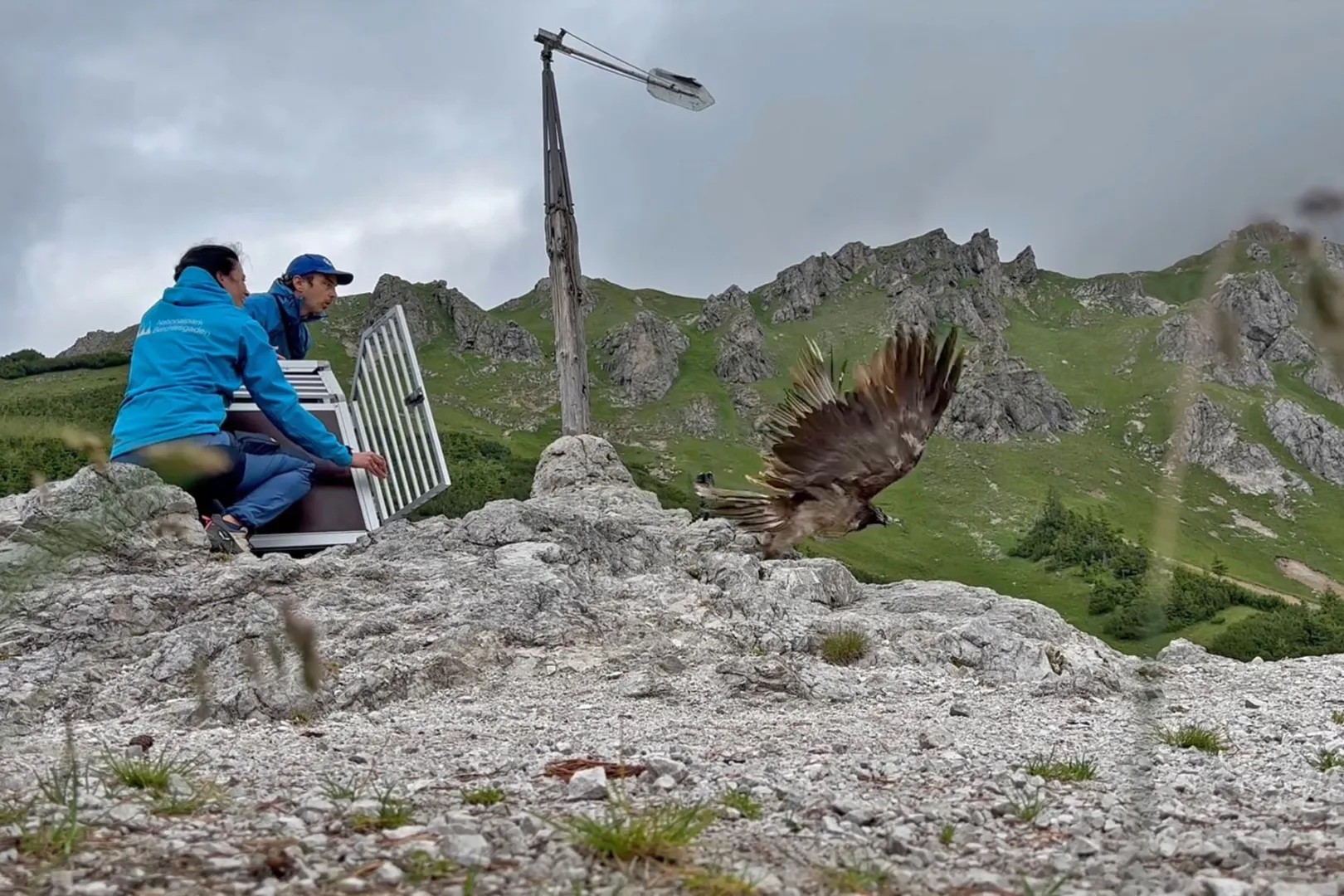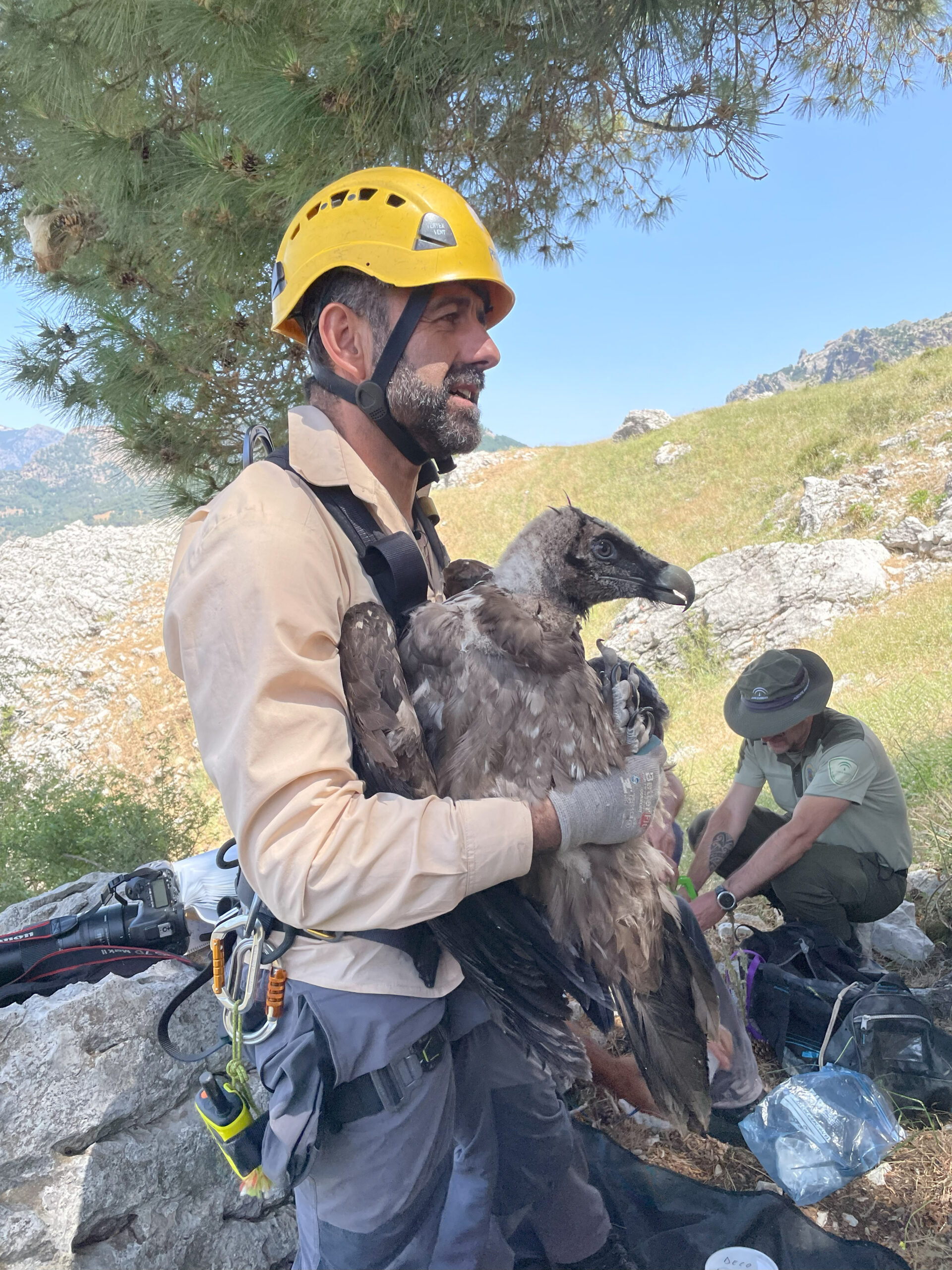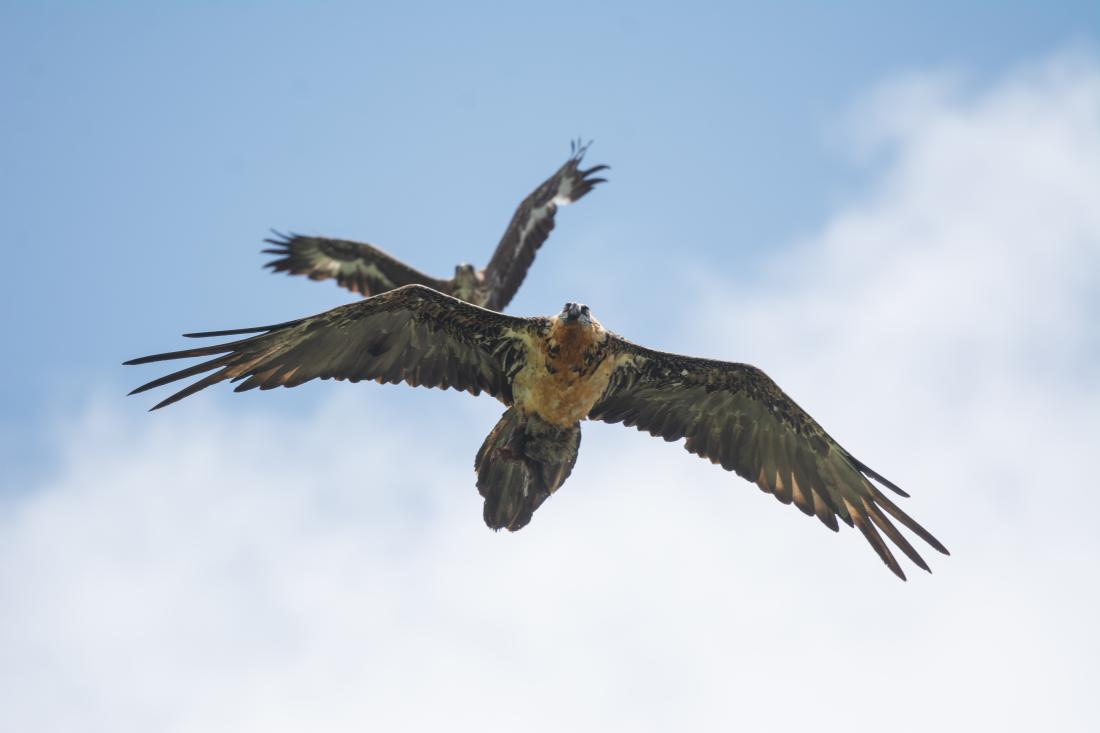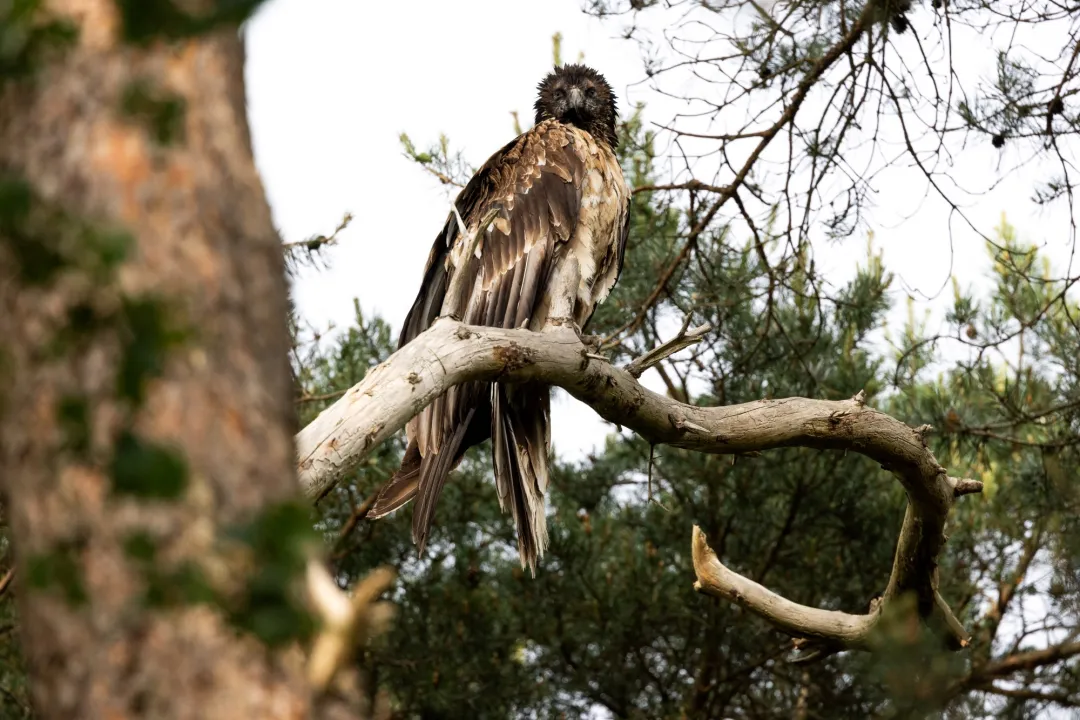The Bearded Vulture (Gypaetus barbatus) reintroduction project in Andalusia has reached a historic milestone: for the first time, 11 breeding pairs have been recorded in the region! This new record marks a significant step forward in the reintroduction and recovery efforts of the species.

Bringing the Bearded Vulture back to Andalusia
Bearded Vultures disappeared from the skies of Andalusia in 1986 due to various threats, including direct persecution, illegal wildlife poisoning, and human disturbance of nesting sites. Recognizing the urgent need for action, the Junta de Andalucía partnered with the former Fundación Gypaetus and the Vulture Conservation Foundation (VCF) to reintroduce the species. The project began in 1996, with the first captive-bred birds released in 2006 across different territories—Sierras de Cazorla, Segura, Castril, and Las Villas.
Nine years after the first releases, a groundbreaking moment arrived in 2015 when Toño and Blimunda, both reintroduced birds, formed the first breeding pair. Their efforts resulted in the birth of Esperanza, the first wild-hatched fledgling in Andalusia in over three decades, symbolizing a turning point in the species’ recovery.
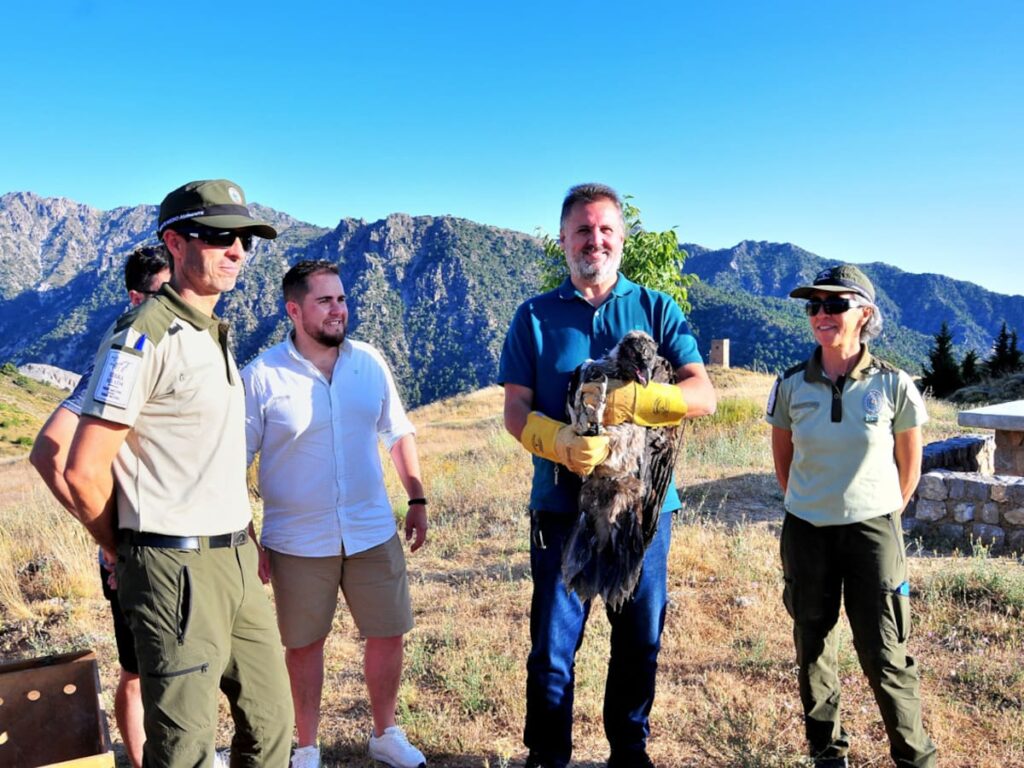
Breaking the double-digit barrier and Esperanza as the symbol of hope
The latest census conducted in Andalusia has confirmed the presence of 11 breeding pairs, surpassing the symbolic double-digit threshold for the first time. Of these, nine pairs are located in the Natural Park of Sierras de Cazorla, Segura, and Las Villas, while two pairs have been found in the Sierra de Castril Natural Park. Last year, in 2024, the releases also started in Sierra Nevada National Park.
One particularly exciting highlight of this year’s breeding season is the presence of Esperanza as a breeding female. Esperanza holds a special place in the history of Bearded Vulture conservation—she was the first Andalusian chick to fledge in the wild after reintroduction efforts began. Her successful transition to a breeding adult is a powerful symbol of the project’s long-term success, demonstrating that reintroduced birds can establish themselves and contribute to a self-sustaining wild population.

A growing and thriving population
Since 2015, when the first breeding pair formed entirely from reintroduced individuals was recorded, the number of breeding territories has been steadily increasing. This year’s record is not only a numerical achievement but also a crucial indicator that the population is moving toward greater stability and autonomy. The inclusion of wild-born individuals in the breeding population is a key milestone for the long-term viability of the species in Andalusia.
The next steps: Monitoring the breeding season
The conservation teams will now enter the next critical phase—closely monitoring the breeding season to track how many chicks successfully hatch and fledge. With careful management and continued conservation efforts, this year could also break the record for the highest number of fledglings.
Stay tuned for updates as the breeding season progresses, and let’s celebrate this milestone for Bearded Vultures in Andalusia!


